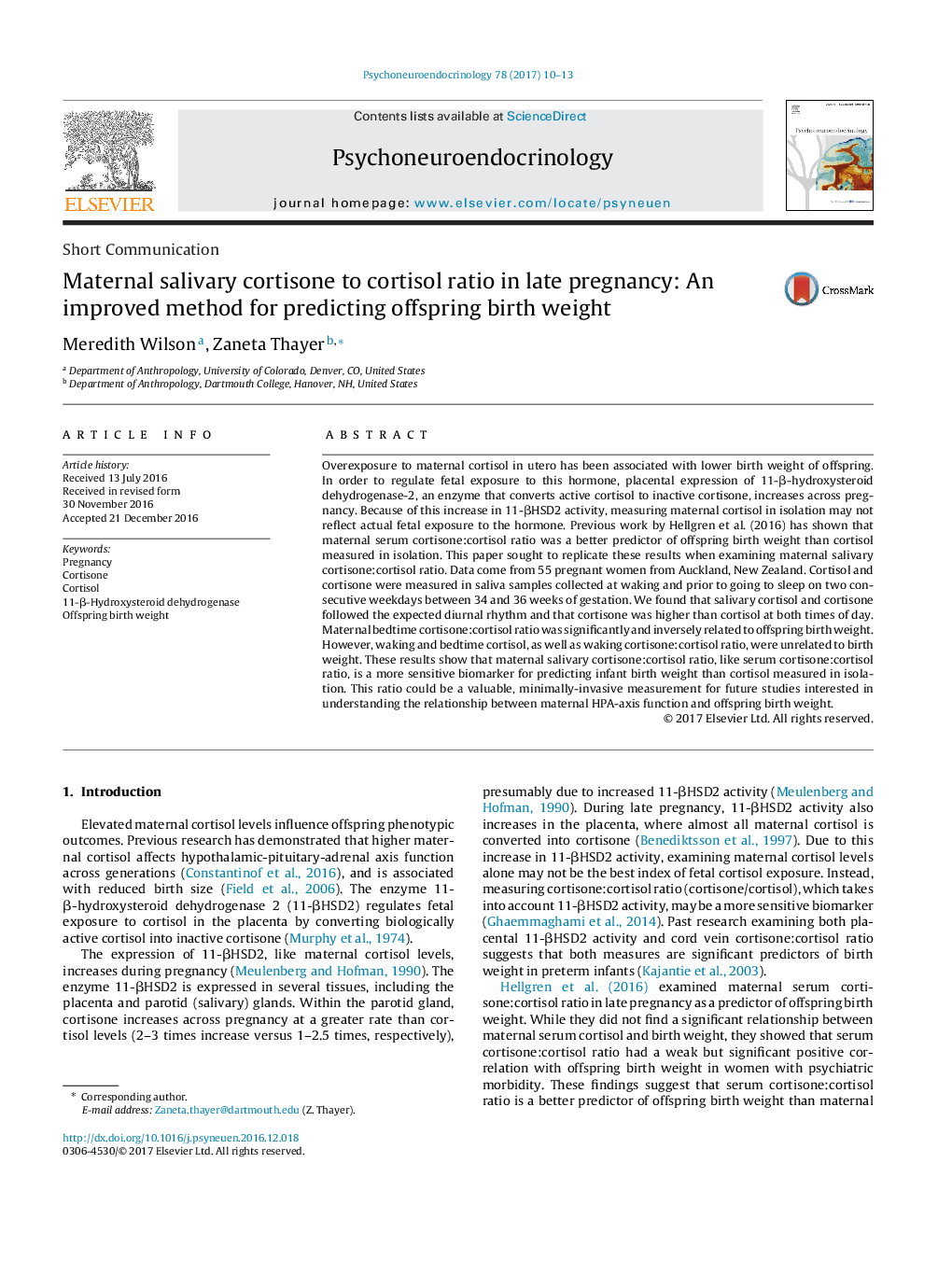| Article ID | Journal | Published Year | Pages | File Type |
|---|---|---|---|---|
| 4934484 | Psychoneuroendocrinology | 2017 | 4 Pages |
Abstract
Overexposure to maternal cortisol in utero has been associated with lower birth weight of offspring. In order to regulate fetal exposure to this hormone, placental expression of 11-β-hydroxysteroid dehydrogenase-2, an enzyme that converts active cortisol to inactive cortisone, increases across pregnancy. Because of this increase in 11-βHSD2 activity, measuring maternal cortisol in isolation may not reflect actual fetal exposure to the hormone. Previous work by Hellgren et al. (2016) has shown that maternal serum cortisone:cortisol ratio was a better predictor of offspring birth weight than cortisol measured in isolation. This paper sought to replicate these results when examining maternal salivary cortisone:cortisol ratio. Data come from 55 pregnant women from Auckland, New Zealand. Cortisol and cortisone were measured in saliva samples collected at waking and prior to going to sleep on two consecutive weekdays between 34 and 36 weeks of gestation. We found that salivary cortisol and cortisone followed the expected diurnal rhythm and that cortisone was higher than cortisol at both times of day. Maternal bedtime cortisone:cortisol ratio was significantly and inversely related to offspring birth weight. However, waking and bedtime cortisol, as well as waking cortisone:cortisol ratio, were unrelated to birth weight. These results show that maternal salivary cortisone:cortisol ratio, like serum cortisone:cortisol ratio, is a more sensitive biomarker for predicting infant birth weight than cortisol measured in isolation. This ratio could be a valuable, minimally-invasive measurement for future studies interested in understanding the relationship between maternal HPA-axis function and offspring birth weight.
Related Topics
Life Sciences
Biochemistry, Genetics and Molecular Biology
Endocrinology
Authors
Meredith Wilson, Zaneta Thayer,
